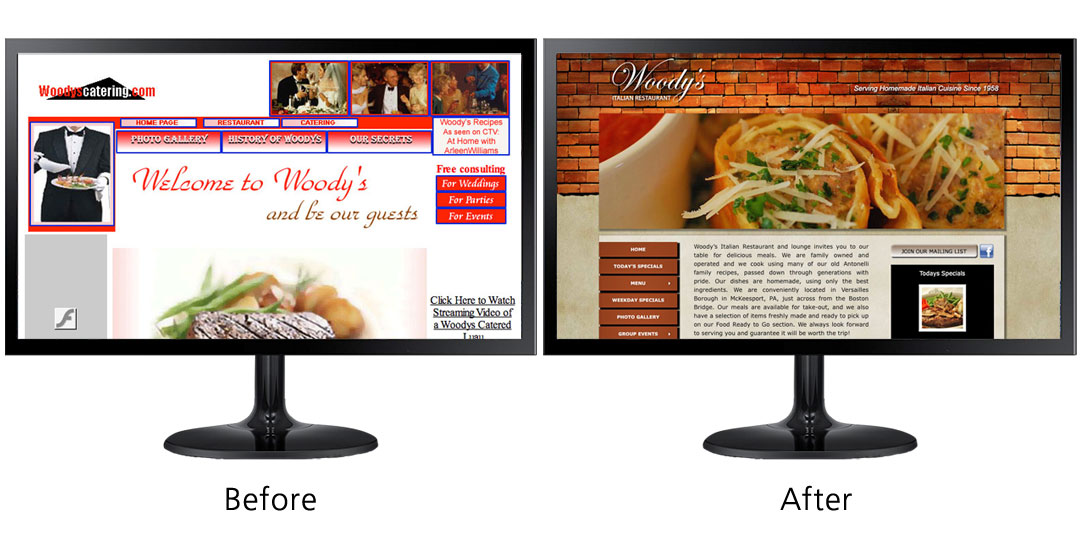These seem to be some of the most confusing terms that I can never explain in one paragraph to clients. Here is a breakdown of a few technical terms that might help:
COLOR TERMS
CMYK – Cyan, Magenta, Yellow, Black – These are the four basic colors used for printing. When mixed together, millions of colors are created in print. Also known as: process color, full color, 4/4 (meaning four colors on each side) or four color printing. All files are made using some mix/percentage of those four colors, when using a cmyk based printing process, like a four color press. Or a cmyk desktop printer- notice the four cartridges in your printer.
Color systems: cmyk, rgb, pantone, pantone process, black and white or grayscale and duotone (two pantone colors). When you are sending a file to print, and the printer asks you to send a cmyk file, they are not asking for a jpg or tif or eps. Different things. You can have a jpg file that is broken down into cmyk or rgb color system breakdowns.
File Mode vs. File Format File mode refers to the color system used in the file. Therefore, a file sent to a four color press should be a cmyk file (color mode). The print file is most likely saved as pdf. But a cmyk file can also be saved as an eps, tif, jpg or other format. If you open a file in Photoshop, you can see the color mode as either cmyk, rgb, grayscale, indexed color, lab color or duotone. From there you have options of saving into different formats such as png, eps, tif, pdf, jpg, gif, etc… there is a long list in Photoshop or file formats. The type of file format you save to depends on the usage of graphic: screen- emailing and websites OR print- any type of printing onto a surface from shirts to billboards.
RGB – Red, Green, Blue – These are the colors used for files on screens and monitors. Think of your tv set with the three color tubes. Those three colors mix to create all other colors you see on your screen. Again, millions of colors. For websites, emails, anything that appears on a monitor, rgb files are required. The file will be saved as a jpg, gif, png or some format used on monitors.
Confusing enough? One more thing to add about desktop printers,such as the one you have sitting near you, or at copy centers. They often print rgb files as well as cmyk files. The file type always depend on the printer being used. There are many types and always new ones, so doing a print test, one of each file type to compare, is the best way to know how to save a file.
FILE FORMATS- more about them
PDF – Portable document format – A format that allows users to view a document in Acrobat Reader. Maybe the most confusing thing people ask me about. Here’s why: You can save as a PDF from almost any application. You can save as .pdf from: Photoshop, Illustrator, InDesign, Microsoft Word, Excel, your browser etc. the list goes on forever. Each pdf can be opened in Acrobat Reader. Everyone knows about Reader, it’s the free version you can easily download, allowing you to open a .pdf, no matter what application you created it from. You don’t need the original application from which it was created such as Photoshop. You cannot edit the document in Acrobat Reader, but you can edit some things in the full version of Acrobat which is a paid version.
If a .pdf is saved from Illustrator, it can be opened in Illustrator with all original layers, vector art and can be edited completely. Again, so confusing for people to understand. When I need a logo for a billboard, it will be printed large. I’m looking for something that was done in Illustrator because it can be enlarged 1000% without pixelating, because there are no pixels. The file may be an .eps, .ai (Adobe Illustrator), or .pdf.
Vector Format – Vector files are made of line drawing programs such as Illustrator, Correl Draw and Freehand (from the past). This means that the files are not made up of dots or pixels, as in dots per inch. What makes them special, is that you can create a logo or billboard in one of these programs, very small. But when you print them out very large, the text and anything you drew within the program will be as crisp and clean at actual size or blown up very large. If you place a photo into Illustrator, the photo will be whatever resolution it was saved as from Photoshop or from the camera, etc. That photo WILL pixelate when blown up larger. But the text never will.
INTERNET TERMS
Registrar – If you think of what the term registrar means: “an official responsible for keeping a register or official records” it will help you understand domain names. A Domain Name Registrar is a company that has been licensed by the Internet Corporation for Assigned Names and Numbers (ICANN) or the local domain name authority in their country to sell domain names.
WYSIWYG – (pronounced “wissy wig”) – What you see is what you get. Meaning: when you are working on a document, you are working without code, basically seeing the end result as you are working on it. You often hear Drag and Drop which is kind of the same thing.



